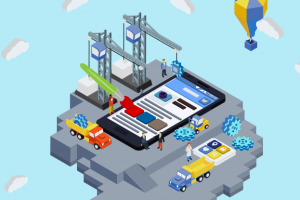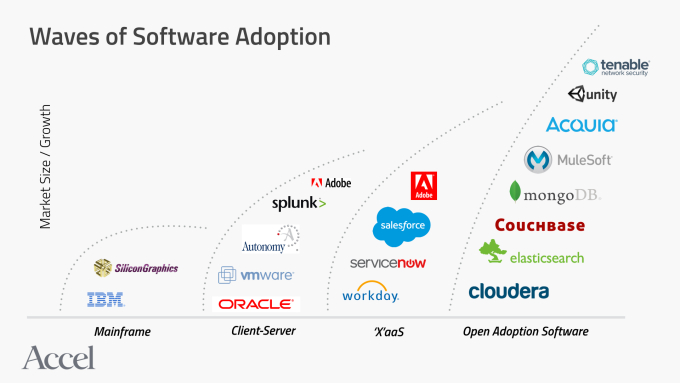Open Adoption Software Become The Next Wave In Software

In the last few years, open technology — software that is open to change and free to adopt — has gone from the exception to the rule for most enterprises. There’s a big shift happening in how enterprises buy and deploy software. More than 78 percent of enterprises run on open source and fewer than 3 percent indicate they don’t rely on open software in any way, according to a recent market survey by Black Duck Software.We’ve seen the IT stack redrawn atop powerful open-source projects, with developers opting for an “open-first” approach to building solutions.
This is a new wave in software — one that’s not only displacing incumbent markets, but creating entirely new ones. We call these Open Adoption Software (OAS) companies, and we believe they’re primed to build meaningful businesses — and drive large economic outcomes.
Openness is a near truism in the Valley, but today projects like Hadoop, Cassandra, Docker and Mule are infiltrating even the most conservative and dogmatic organizations. As such, startups like Cloudera, DataStax and MuleSoft are generating hundreds of millions of dollars in revenue each year from real enterprise customers by selling proprietary, value-added products around their open projects.
Open software has already rooted itself deep within today’s Fortune 500, with many contributing back to the projects they adopt. We’re not just talking stalwarts like Google and Facebook; big companies like Walmart, GE, Merck, Goldman Sachs — even the federal government — are fleeing the safety of established tech vendors for the promises of greater control and capability with open software. These are real customers with real budgets demanding a new model of software.
While most OAS companies have at least some amount of freely available or open-source components, open source and OAS should not be conflated. Open source describes a software development methodology, whereas OAS pertains more to a go-to-market and company-building philosophy. OAS is not about cheaper alternatives to proprietary on-premise software. It is about creating new markets more so than displacing incumbents. It’s innovative, it’s developer-driven and it’s the next wave of software adoption.
With each successive wave of technology — from mainframe to client-server to ‘X’aaS (IaaS, SaaS, etc.) to OAS — software has gotten progressively easier to adopt. Therefore, adoption has happened faster and has reached a broader audience than the wave before it.

